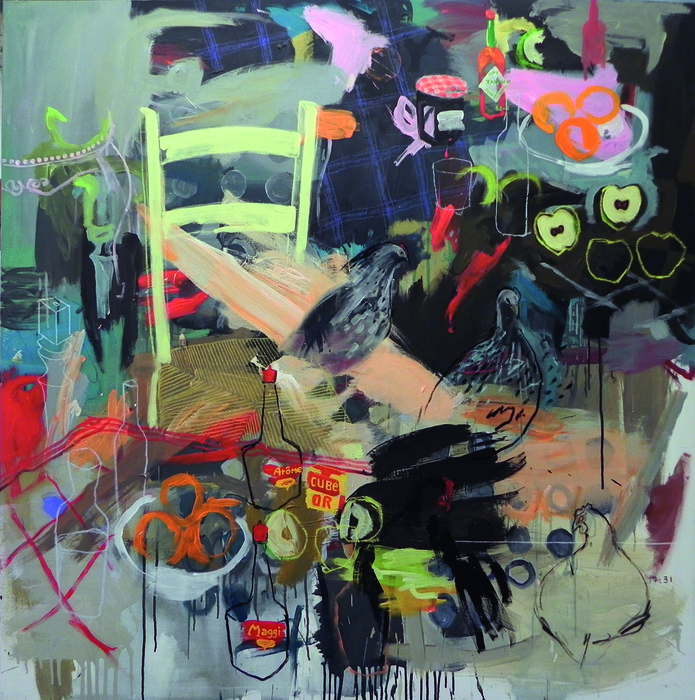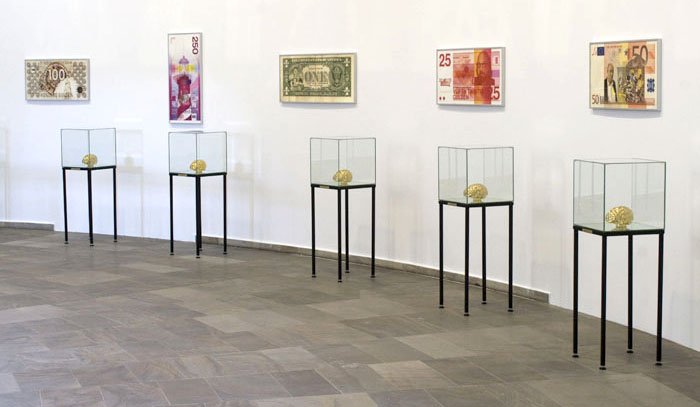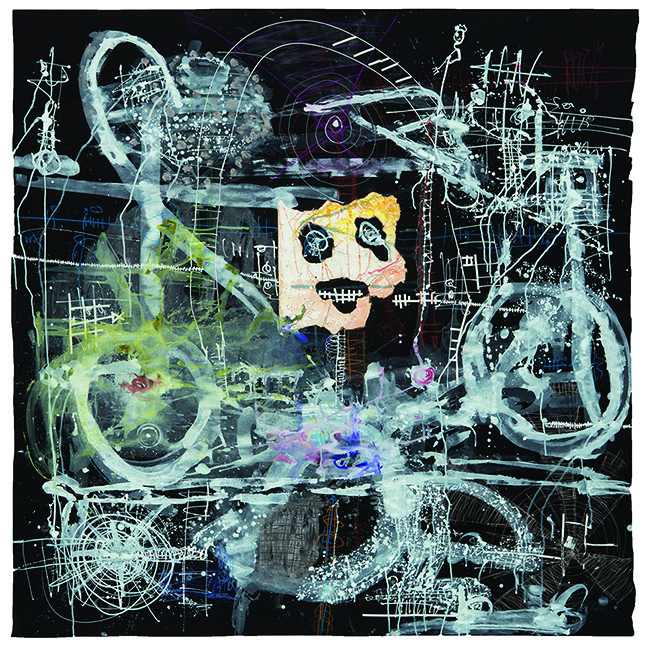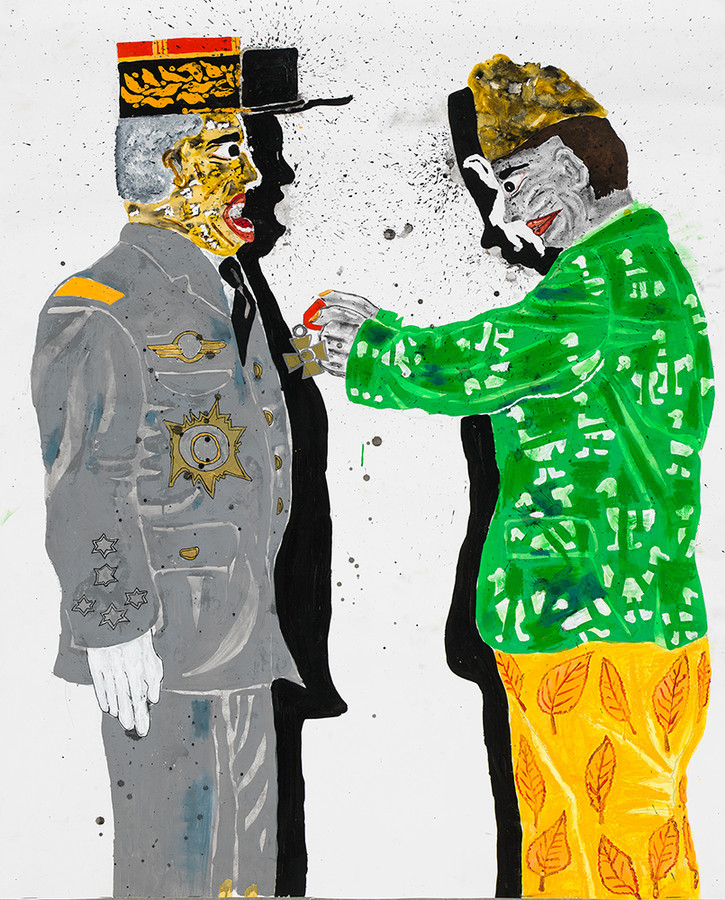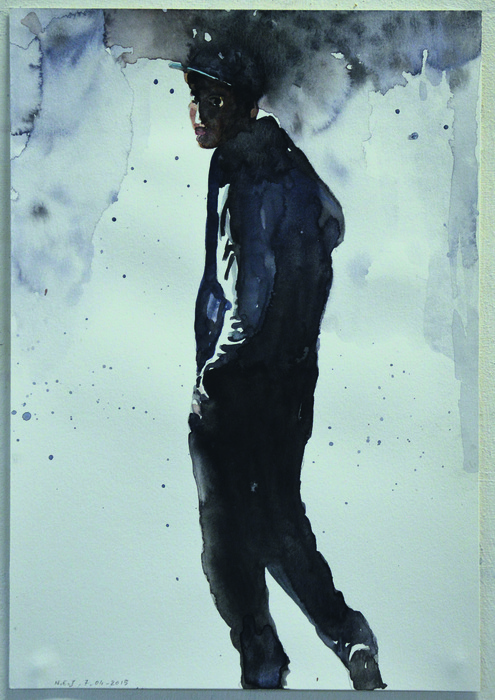
Edo Dijksterhuis reviewed the exhibition ‘What About Africa? 14 contemporary African artists’, organized by Africanah.org and Witteveen Visual Art Centre in Amsterdam. He calls the works top-notch but the concept of the exhibition highly problematic. “…..in this show they (the different countries) appear lumped together as if Africa were a homogeneous “country”—as it still is in many people’s minds.”
To stimulate the dialogue around this kind of exhibitions, we reprint his review on Africanah.org.
Omar Victor Diop, Ikhlas Khan, Diaspora series, 2015, courtesy Magnin-A, Paris.
Great Art Reduced to Origins in What about Africa?
What about Africa?, at Witteveen Visual Art Centre in Amsterdam, is an exhibition with top-notch art on display. At the same time, its concept is highly problematic. The show brings together works by fourteen artists, who have little in common besides being African. They hail from countries like Morocco, South Africa, Benin, and Kenya—places removed from each other by the full length and breadth of a vast continent. In terms of social background, national history, or ethnicity the participants are as much alike as an Icelander and an Albanian. Still, in this show they appear lumped together as if Africa were a homogeneous “country”—as it still is in many people’s minds.
There’s no reason to doubt the curator’s noble intentions. Rob Perrée got interested in African-American art some twenty years ago. With nothing short of missionary zeal he has been promoting art from Africa and the African diaspora, through exhibitions, publications and, for the last two years, his website Africanah.org. His efforts have been met with very little response here in the Netherlands, however, which he attributes to the fact that the county’s most recognized colonial history is largely South-American (Surinam) and Asian (Indonesia), and not African as it is in France or the UK.
Gopal Dagnogo, Dinner with poultries, 2015
Zarina Bhimji, Out of Blue. 2002 (video still), courtesy Lumen Travo Amsterdam
International recognition of African artists has been slow, not just in the Netherlands. Magiciens de la Terre (1989) at Centre Pompidou famously brought non-western contemporary art, including African, to the attention of a broader audience, though not without missteps. Since then several prominent shows have attempted making a dent in western dominance of the art arena, most notably Documenta 11 (2002). Its director, Okwui Enwezor, also curated Snap Judgments (2006), an overview of new African photography, which made it to the Stedelijk Museum Amsterdam in 2008. But not much else has been available in the Netherlands, except for shows of inconsistent quality by a few specialized galleries such as Galerie 23 and Sanaa.
This lack of exposure breeds indifference and encourages misapprehensions to fester. The fact that Southern Africa has a lively gallery scene, non-profit art spaces flourish in Cotonou, Cairo, Lagos, and Douala, and the continent hosts at least four biennials of international repute, is easily overlooked, or simply unknown.
Meschac Gaba, Lac de Sagesse, detail installation, 2009, courtesy Lumen Travo.
Reason enough to take counteractive measures, no doubt. But with a presentation like What about Africa? there’s a real risk of preaching to the choir; if attendance at the exhibition’s opening is any indicator, the show might reach some people not familiar with contemporary African art, but likely not many. The less receptive viewers, the crowd Perrée is purportedly targeting, will probably ignore the show, exactly because of its emphasis on the participants’ origin. Furthermore, the broad “African” rubric applied to the show may even backfire: applied to such diverse artists, the label reinforces novelty and otherness through the measure of geography, rather than suggesting the artists be evaluated by any number of criteria the way their northern peers are.
Thierry Oussou, Trace XII, 2015
Perrée himself identifies another danger of highlighting African artists as such. “African art is threatening to become popular,” he writes in the show’s catalogue. So Thierry Oussou (1988) or Phoebe Boswell (1982) might become the next hot young & new thing on the art market, to be hyped, squeezed and eventually ditched? That would be a waste of talent for sure, but these young Africans have as much right to be successful/exploited as their European or American counterparts—indeed, some already are. Moreover, their older colleagues in What about Africa?—Meschac Gaba, William Kentridge, but also the rather young Omar Victor Diop—have proven that as an African artist you can enjoy a steady market value and not succumb at the hands of art speculators.
Kura Shomali, Untitled, 2014, courtesy Magnin-A, Paris.
A bubble and a subsequent burst like the market for contemporary Chinese art experienced a couple of years ago, is unlikely to happen to African art. There simply aren’t enough artists to sustain it. And the artists achieving the quality and output level necessary for the international market are highly individualistic. In China, contemporary art boils down to three or four major movements, making the market at once deeper and more narrow. But it’s hard to imagine Gopal Dagnogo’s chaotic, lively, and slightly disturbing brand of painting to evolve into a school, or Zarina Bhimji’s inquisitive photographs of stark interiors. They are just too personal and specific.
Nour-Eddine Jarram, Untitled, 2015
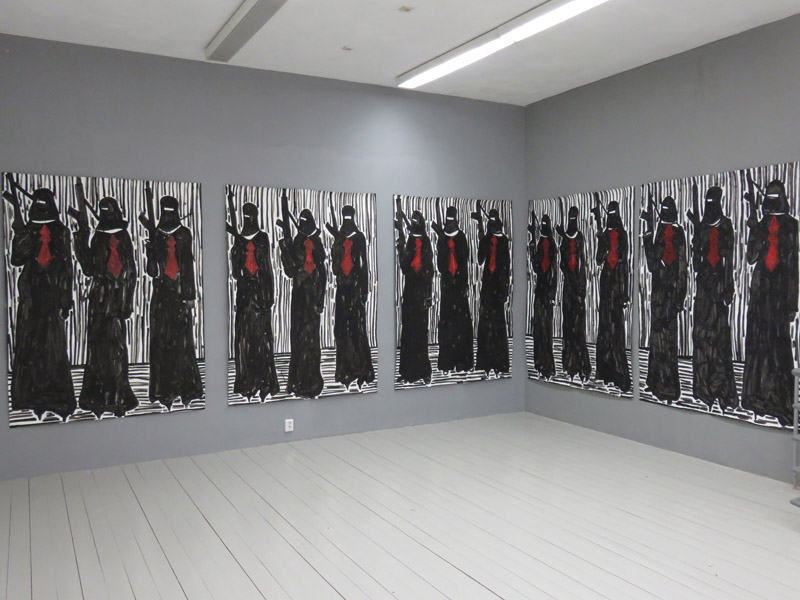
Hamid El Kanbouchi, Waka Waka, 2016, courtesy Nouvelles Images, The Hague
That’s also what makes reviewing a show like What about Africa?—its title ringing somewhere between rhetorical and hesitant—an almost impossible task. The works all have their own merits—from Nour-Eddine Jarram’s exquisite watercolors to the in-your-face quality of Hamid El Kanbouchi’s painted installation of Kalashnikov-toting women in burqas. But the artists represent fourteen completely different positions. This is not a show with great African art. It’s a show with great art, period. And it should be presented as such, concentrating on the content rather than its origins.
Edo Dijksterhuis is an independent art critic from Amsterdam
What About Africa?
Witteveen Visual Art Centre
Konijnenstraat 16 A, 1016 SL Amsterdam, Netherlands
23 January 2016 – 27 February 2016

